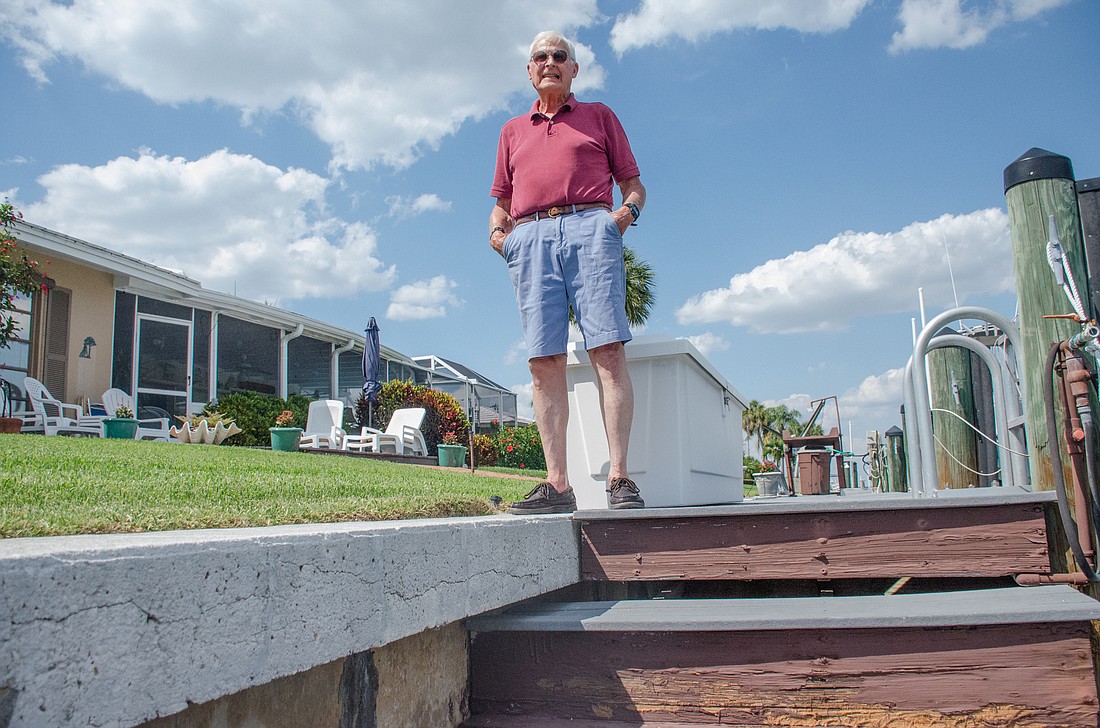- April 1, 2025
-
-
Loading

Loading

Ned Jewitt remembers the first time he saw a seawall fail: “I’ll never forget it,” he said.
An old seawall at the end of a canal that abuts his home had been undercut by a dredge, Jewitt said, causing the bottom of the shoreline structure to fall into the channel.
The former Navy engineer said he’s maintained his seawall ever since, filling cracks, installing vents and plugging leaks, all on his own in the waist-deep water, just a few yards from his back door.
And for that reason, Jewitt’s 50-year-old barrier is in good shape. But there are others the Country Club Shores resident has seen in his neighborhood that are not.
“There are a lot of seawalls in the 50- to 60-year age when they have a need to be repaired or replaced,” said Planning, Zoning and Building Director Allen Parsons.
The Longboat Key Planning, Zoning and Building Department receives between five and 10 applications for rebuilding seawalls each month, according to the department. And many of those proposals to rebuild or repair a seawall include requests for increased height and or extension into the water, Parsons said.
It’s with that in mind that the department has proposed loosening its restrictions on seawall repairs and rebuilds to allow barriers a foot and a half higher than allowed now and an additional six inches of extension into the water.
“There are a lot of seawalls within the town that are both older and somewhat low in elevation,” Parsons said. “With the aging of those, as they’re getting replaced, they have experienced in some cases king tide-type flooding or storm surges that water is going over the wall.”
The problem with the code now is that it allows for six inches of additional height above adjacent seawalls, Parsons said. That six inches, residents say, is not enough.
So in early 2016, the department went before the Town Commission to propose raising the allowable height for seawall reconstruction, according to meeting minutes.
Part of that discussion about increasing allowable height for seawalls included the potential impacts of sea level rise, one of the considerations the town made when proposing the ordinance this year.
Sea levels rise an average of one eighth of an inch per year, according to the National Oceanic and Atmospheric Administration.
“Sea level is rising for two main reasons: glaciers and ice sheets are melting and adding water to the ocean and the volume of the ocean is expanding as the water warms,” according to NOAA’s climate change webpage.
Jewitt said that over the past 20 years, he’s not noticed much change in the everyday tides and height of the sea level in the canal behind his home — but he is concerned about intensifying storm surges.
That’s part of the reason Jewitt said he thinks what the town has proposed for seawall heights isn’t enough. Seawall’s are designed to withstand decades of wave action, many built to last more than 50 years. Jewitt said he's concerned that intensifying storm surges will overcome a six inch increase in his seawall height.
Although he's on a fixed retirement income, Jewitt said he would like to raise his seawall as high as four feet above where its stand now.
And these projects aren’t cheap — they can range anywhere between $10,000 and $50,000, according to permits issued by the town.
“I’m trying to get more than a foot and a half because it gives you that much more protection for my home,” Jewitt said.
The proposed ordinance for raising the allowable seawall height is scheduled for public hearing May 7 at Town Hall.